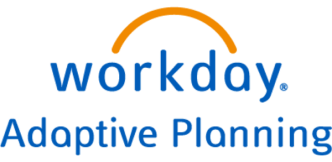Table of Contents
Agility in financial planning is no longer a luxury. It has become essential. Finance teams, especially those using Workday Adaptive Planning Core plus Reporting, face growing pressure to move beyond static, annual budgets.
Instead, they need financial planning tools and strategies that allow for rapid adaptation to new information and shifting market conditions. This article offers five key questions to help finance teams assess their financial planning agility and uncover where improvements can be made.
1. Do You Use Rolling Forecasts Instead of Static Budgets?
The days of crafting a fixed annual budget and hoping it stays relevant are behind us. Traditional budgets tend to become outdated quickly, as market dynamics and internal business realities evolve faster than the annual planning cycle.
Agile financial planning depends on rolling forecasts — regular updates to financial plans, often monthly or quarterly, that reflect current data and changing conditions.
Ask yourself: Are your forecasts updated throughout the year to reflect real-time information? Can your finance team adjust plans swiftly when new trends or disruptions emerge? Using rolling forecasts means your financial planning tools must support continuous data refresh and rapid scenario updates, so you aren’t caught flat-footed by unexpected developments.
2. Are Your Plans Tied to Operational Drivers?
Agility in financial planning also comes from linking financial outcomes directly to business drivers, the factors that truly move the needle.
These could be sales volume, marketing spend, headcount, or other operational metrics relevant to your business model. When forecasts reflect these drivers, finance teams can better understand what levers to pull to influence results.
Consider: Do your forecasts clearly map to the key operational drivers behind your revenue and costs? Is it easy to tweak your plans when assumptions about these drivers change?
Financial planning tools that allow seamless integration of operational data provide finance teams with more actionable insights and foster alignment with other business functions.
3. Do You Practice Scenario Planning?
No one can predict the future, but agile planning prepares your organisation for multiple possible futures.
Scenario planning involves building best-case, worst-case, and moderate scenarios to test how financial outcomes might shift under different conditions.
This approach arms finance teams and decision makers with options, reducing risk and enabling faster responses when circumstances change.
Ask yourself: Are you modelling a range of potential outcomes to stress-test your plans? Are these scenarios actively used to guide strategic decisions, rather than sitting unused in spreadsheets?
A mature financial planning approach encourages scenario analysis as a regular habit, helping teams stay ready for uncertainty.
4. Is Your Planning Process Collaborative and Transparent?
Agility doesn’t thrive in silos.
Effective financial planning today requires collaboration across departments and transparency in metrics, assumptions, and outcomes. When operations, marketing, HR, and finance work together, forecasts reflect a broader reality and gain wider buy-in.
Reflect on these points: Are key stakeholders beyond finance involved in your planning cycles? Can anyone access and understand the assumptions behind the numbers?
Financial planning tools that support collaborative workflows and transparent dashboards enable better communication and faster alignment across teams.
5. Are You Leveraging Technology for Real-Time Insights?
Lastly, the right technology is the backbone of agile financial planning. Modern financial planning tools like Workday Adaptive Planning Core plus Reporting provide real-time dashboards, predictive analytics, and integration with other business systems.
These capabilities empower finance teams to make faster, data-driven decisions and adjust plans dynamically.
Consider: Do you have immediate access to real-time financial data? Are you fully utilising advanced analytics and reporting features to uncover trends and risks before they escalate? Leveraging technology effectively is one of the best practices for agile financial planning, turning data into a strategic asset rather than a lagging indicator.
Conclusion
Financial planning agility means embracing flexibility, collaboration, and technology. Asking these five questions helps finance teams evaluate their current maturity and pinpoint areas for improvement.
Workday Adaptive Planning Core plus Reporting is designed to support these agile practices with powerful financial planning tools and collaboration features.
For finance teams aiming to stay ahead, improving planning agility is a necessity. With the right approach and tools, financial planning can keep pace with the speed of business, empowering smarter decisions and stronger outcomes.





